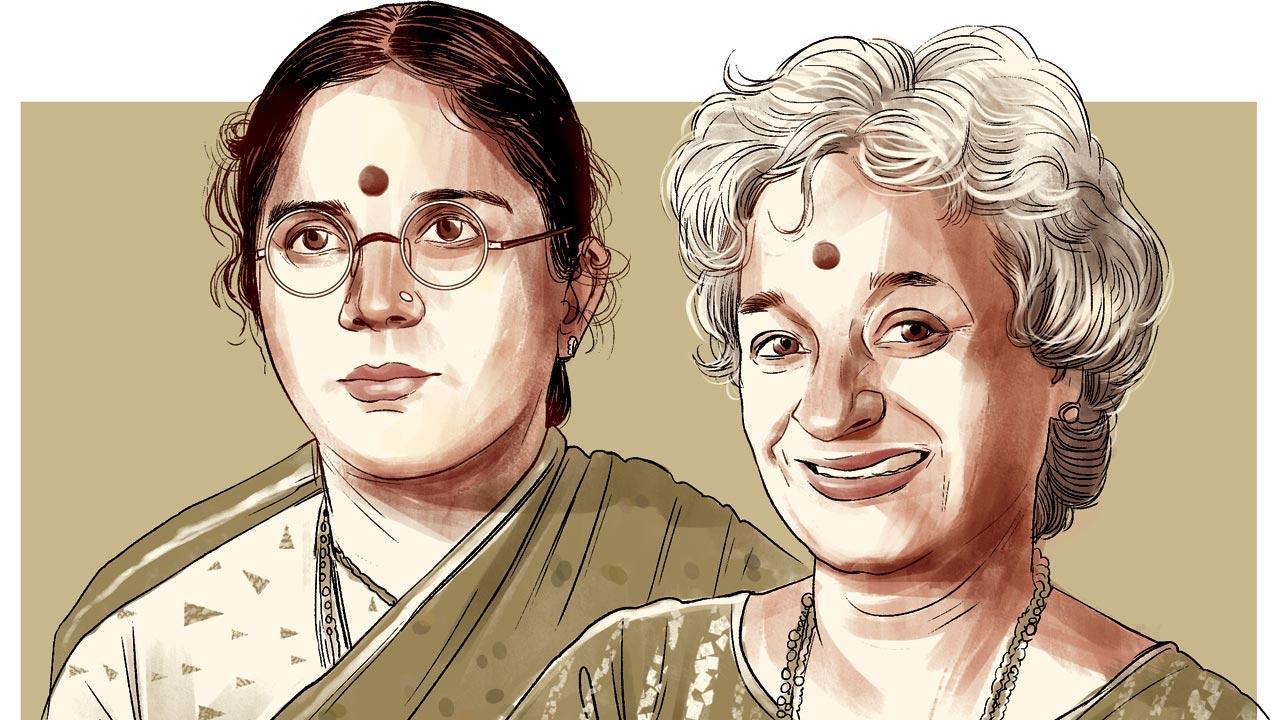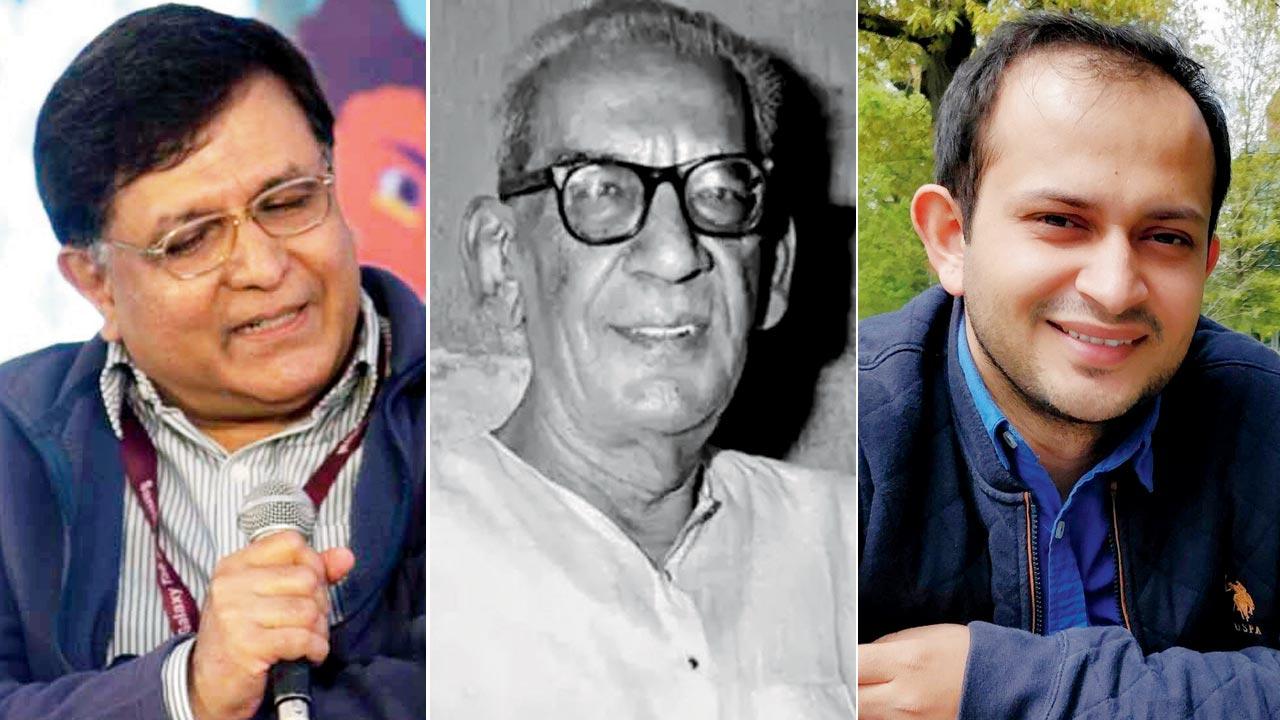Agatha Christie had an Indian challenger as early as 1930. We just didn’t know it. A new anthology presents the toast of detective fiction from the subcontinent, whose pioneers include women

(Left) Kothanayaki Ammal and (Right) CS ‘Ambai’ Lakshmi. Illustration/Uday Mohite
In the vast ocean of detective fiction and films, sleuths—whether amateur or trained—have often been accompanied by a literary foil, a side-kick who assisted them and brought forth the best of their investigative abilities. Consider Karamchand and Kitty, or Sherlock Holmes and Dr John Watson. In The Unexpected Inheritance of Inspector Chopra, British author Vaseem Khan pulls an unexpected trick: he fashions a young elephant as the side-kick, giving Chopra’s enterprise a fitting name—the Baby Ganesh Detective Agency.
ADVERTISEMENT
Stories like these in the genre drew in scholar, writer and editor Tarun K Saint, who has long been fascinated by detective stories because of the intellectual challenge inherent in them. The intriguing clue-puzzle structure aside, he was also a fan of the ways in which they laid the groundwork for social critique.
During his time at the Delhi University, where he taught English (Honours), he even dissected detective mysteries with students as part of a course. It is then that Saint came face to face with a serious gap—the absence of an adequate introduction to writers from India and the subcontinent who have deeply enriched the canon.
 Tarun K Saint, Sharadindu Bandyopadhyay and Tanuj Solanki
Tarun K Saint, Sharadindu Bandyopadhyay and Tanuj Solanki
“While detective fiction was part of the BA English Hons syllabus at Delhi University in my time, Agatha Christie’s The Murder of Roger Ackroyd was as far as we got in the paper on Forms of Popular Fiction, besides Gabriel Garcia Marquez’s innovative Chronicle of a Death Foretold in another paper,” he says to mid-day, adding that the gap has since been remedied with the addition of authors like Madhulika Liddle and Ibn-e-Safi during a revision of the syllabus.
Saint’s classes turned exploratory once he began introducing his students to references from the Indian greats. Nearly a decade later, he embarked on an ambitious project: to compile original detective stories written in English as well as translated ones from the subcontinent, defined by an offbeat, distinctive nature that skipped past the cliches of the Golden Age, instead embracing an experimental approach. The result is a two-volume anthology published by Hachette India which offers the reader a sumptuous feast of stories which are parodic, existential, sci-fi, police procedurals and historical mysteries. Here, the minds behind classics like Satyajit Ray and CS ‘Ambai’ Lakshmi are joined by contemporary names like Tanuj Solanki, Kiran Manral and Shweta Taneja.
Dressed in a yellow and red jacket with curious sketches of symbols and havelis, the anthology is impossible to miss. Its inner pages depict what the bookshelf of a genre fan may look like, where a black cat makes itself cosy next to a magnifying glass. And aside from its literary offerings, it also gives us a quick look at the historical origins of the genre in India and nuggets of trivia, such as the role of AH Wheeler stores at railway stations in expanding pulp detective fiction’s reach.
Saint notes that the genre took firm root in the Bengali literary culture, resulting in beloved detectives like Ray’s Feluda and Sharadindu Bandyopadhyay’s Byomkesh Bakshi. The popularity of “goyenda” fiction in magazines and novels from the late 19th century had much to do with the advent of colonial modernity in Bengal and the Anglicisation of the elite. The genre was also wholeheartedly embraced in Tamil, where the foundation was, in fact, laid by female writers. “Laura Brueck and Francesca Orsini’s work has revealed that detective novelist Vai Mu Kothanayaki Ammal, who began writing as early as the 1930s, was the very first,” Saint highlights.
Interestingly, the worlds of some contemporary detective-heroines like Harini Nagendra’s saree-clad Kaveri and Sujata Massey’s Perveen Mistry—imagined as Mumbai’s only female solicitor of the time—are also located in pre-Independence India. “While Vaseem Khan’s Parsi policewoman Persis Wadia is based on Shanthi Parwani, the first woman to join the Mumbai police force, and eventually become an ACP in 1976,” Saint reminds us.
The genre’s strength in India lies in adapting to local culture and responding to the evils and oppression that plague society. He takes us through Gopa Majumdar’s translation of The Locked Chest by Ray: An elderly retired Bengali gentleman living in the countryside seeks out Feluda to help him in a case involving a parrot with seemingly mnemonic abilities, an inheritance dispute, and a murder.
“The detective solves the initial puzzle set for him, and eventually cracks the case on account of his keen understanding of kinship ties in zamindar families and the psychological motivation for theft and murder within them. In the process, the story bears witness to the difficulties of transition from semi-feudal remnants to a more egalitarian and democratic social and cultural order,” Saint explains.
Again and again, Mumbai emerges as the backdrop for the solving of disappearances, murders and stolen objects. The anthology’s editor says that the city, like Kolkata and Chennai, has been a coastal crucible where tradition and modernity have found their respective points of balance. “In the work of Massey, Nev March, Anuradha Kumar, Chandra and Khan, the city acquires a definite character, as an embodiment of possibilities which may veer in the direction of noir style narratives, as well as lean back as historical mysteries uncovering lost stories about both repression and empowerment in the city’s prehistory,” Saint says, “Ambai’s stories are remarkable examples of vernacular cosmopolitanism, as she deconstructs the form in order to more effectively expose the dark underbelly of contemporary city life from varied subaltern perspectives.”
 Subscribe today by clicking the link and stay updated with the latest news!" Click here!
Subscribe today by clicking the link and stay updated with the latest news!" Click here!







